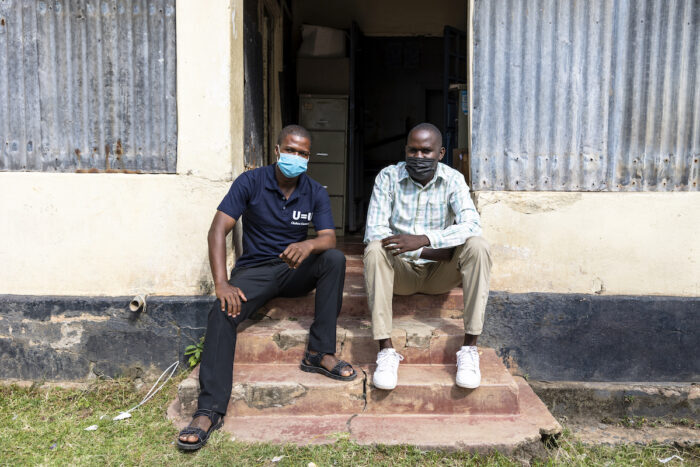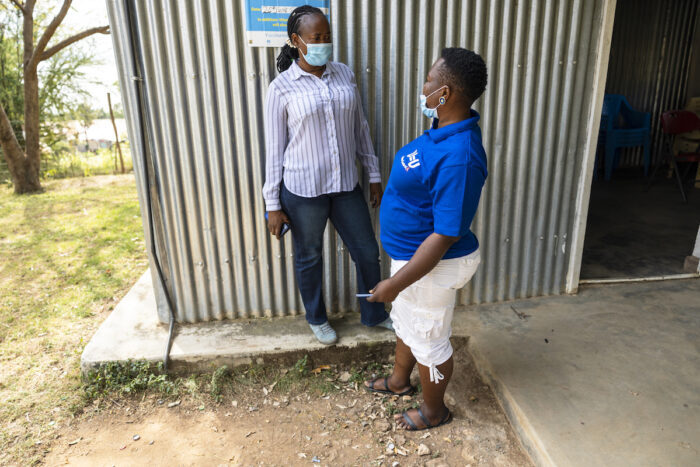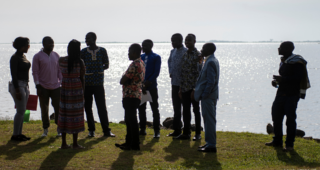Nothing for Us Without Us
Key populations (KPs)have a disproportionate greater rate of HIV infection and therefore a significant impact on HIV transmission, despite accounting for a small portion of the overall population.
An estimated 33 percent of new HIV infections are attributed to key populations, who include female sex workers (FSW), men who have sex with men (MSM), transgender individuals, and people who inject drugs.
Due to a high level of stigmatization, discrimination, and other hostilities on the basis of their orientation and lifestyle, members of key populations face many difficulties accessing health services.

“EGPAF identified existing gaps and challenges among KPs—and for the first time in February 2021, entering into a formal Memorandum of Understanding with KP-led Civil Society Organizations (CSOs) as a strategy to reach KPs with HIV prevention, care, and treatment,” explains EGPAF’s Lucie Adagi.
For sustainability, EGPAF involved targeted local CSOs in the design and implementation of KP activities under the mantra, nothing for us without us.
As such, as of March 2021, EGPAF and KP-led CSOs began to implement a peer educator model for key populations in 161 hotspots, supported by 20 FSW peer educators, 10 MSM peer educators, and 1 peer educator representing people who inject drugs.
Peer educators work alongside KP-led CSOs to link KPs to health services at a KP and priority population Drop-in-Center (Dice) in Makongeni health center.
Eunice Atieno Ojallah, in charge of the Dice, says that despite the Dice having been set up in 2015, it was not until the binding agreement with KP-led CSOs that real success began.
Ojallah states that by working with the Smart Team Ladies, a FSW led Community Based Organization (CBO), the KPs program initiated 154 FSWs into PrEP between March and June 2021. This is up from a maximum of four FSWs initiated into PrEP over a period of six months within the previous financial year.
In 2017, 44 MSM clients were enrolled into EGPAF’s KPs program. As of June 2021, a total 1,570 MSM were enrolled. They include 169 HIV-positive MSM newly identified between March and June 2021.
“Many MSM were testing HIV positive with very low linkages to care and treatment. At some point we had a linkage of 40 percent, meaning that another 60 percent of HIV positive MSM were not in care. Today, MSM linkage has increased to 88 percent,” Adagi observes.

She says that between October 2019 and June 2021 alone, “we identified 15 HIV positive MSM, and 13 were enrolled into care.”
Critical in this strategy is the provision of social network services (SNS) offered to social contacts of KPs diagnosed with HIV. Since March 2021, of all KPs who tested HIV positive, 33 percent were tracked though the SNS approach conducted through the goodwill of KP-led CSOs.
Quenter Odhiambo, from Smart Team Ladies, and Kenneth Matiba, the leader of Youth For Equality Forum, an MSM led CBO, agree that a formal arrangement comes with clear deliverables and therefore significant inroads.
These are two of three CBOs already on board working in the areas of PrEP advocacy and initiation, enrollment into the KPs program and promotion of the U=U campaign. EGPAF is especially keen on the U=U strategy, a global campaign which means Undetectable equals Untransmitable.
Thus far, Matiba and group have enrolled 386 MSM into the KPs program, initiated 96 MSM into PrEP and reached at least 100 MSM with the U=U campaign.
Before the KP-led CSOs strategy, out of 100 MSM eligible for PrEP, only one would enroll. Currently, MSM PrEP retention in the first month is at 91 percent and at 87 percent at the third month which Ojallah says is unprecedented and remarkable. Overall, MSM PrEP uptake has risen to 62 percent, up from 18 percent.
Similarly, between March and June 2021, the Smart Team Ladies initiated 154 FSW on PrEP and reached 363 people with the U=U campaign.
On average among the KPs, EGPAF has achieved an 88 percent low detectable levels (LDL). Overall, 98 percent of KPs have a suppression rate of below 400 with a goal of getting all KPs in care to a low viral load.
Joyce Chimbi
Kenya
HIV Treatment Optimization; Key Populations



